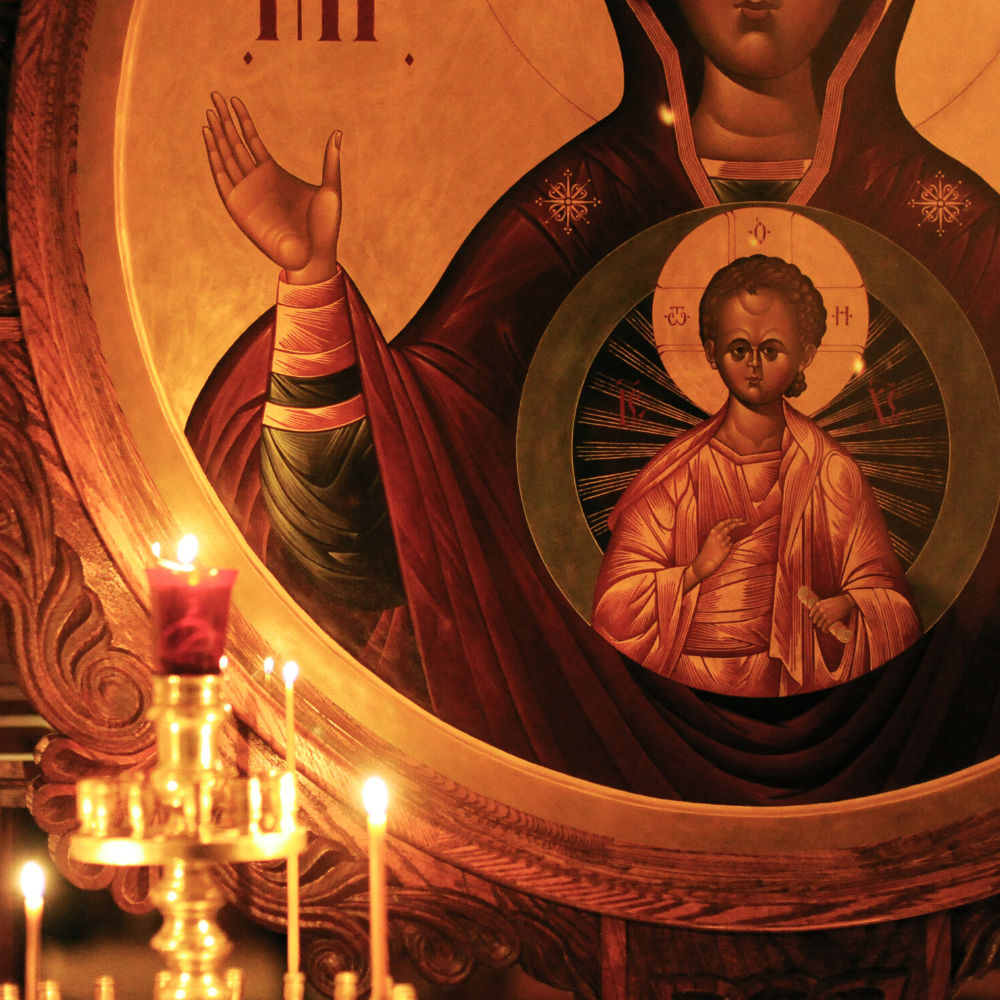St Barbara, the New Martyr
Much has been rightly said about the New Martyr of the Communist Yoke, Grand Duchess Elizabeth Feodorovna. We know many details of her holy life, as she was a well-known public figure before she was venerated as a saint.
Far less is known about her companion in martyrdom, St Barbara, who occupied a far humbler position in this world, and was without fame or title. For this reason, it is easy to regard her simply as the companion of St Elizabeth rather than as a saint in her own right. And perhaps this is not entirely inappropriate, as she was devoted to Elizabeth in life and death, and would certainly not push herself forward for praise, preferring to be quietly present, the focus remaining on her mistress and spiritual mother. Nonetheless, we feel that it may be a worthy endeavour to attempt, in some small way, to redress the balance. And in so doing, we may find that her story is, in its own way, no less extraordinary than St Elizabeth’s own.
St Elizabeth was born a princess; her birth was of course widely celebrated, and its details recorded. Testimony to Sister Barbara’s relative obscurity of origin is that we don’t know when or where she was born. All we know is that when she died in 1918 she was 35 years old, so she must have been born around 1883, making her nearly twenty years the junior of St Elizabeth. We also know that at some point before the assassination of the Grand Duchess’ husband in 1905, Barbara (or Varya, as she was nicknamed), was accepted into their household as a servant. In 1910, at the same time as St Elizabeth, Barbara took monastic vows, and moved with the Grand Duchess to her new Convent of Martha and Mary. In a pleasing spiritual reflection of their life in the world, the former mistress became Abbess, and the former maid became her cell attendant.
It is said that Barbara was as devoted to her spiritual mother in the convent as she had been in the palace, no longer bound by duty, but by the higher calling of freely chosen love. One of St Elizabeth’s greatest qualities was her unaffected treatment of everybody, high-born and lowly, without undue regard for her own status. The same can be said of Barbara, who never allowed her closeness to a member of the royal family to make her in the least self-important, but instead emulated the humility of her mistress. When St Elizabeth was arrested in 1918, in keeping with her previous devotion Nun Barbara begged on her knees to be allowed to accompany her. This request was granted, and they were imprisoned together at Alapaevsk, but after some time, Sister Barbara was told she was to be taken to Yekaterinburg, while Mother Elizabeth was to remain. Both women cried like little children at being separated. Before the authorities in Yekaterinburg, Barbara once again begged to be allowed to return to St Elizabeth. Such was her true and unfeigned love, that being denied the ability to be with her whom she loved, and share her fate, whatever it should be, was the only thing that felt unbearable to her. The authorities, seeking to scare Barbara into changing her mind, told her that she could return on one condition – that she sign a document agreeing to be tortured and killed. But far from being pushed off course, Barbara happily responded with these astonishing words: “I agree to give you the requested signature, not only in ink, but, if necessary, in my own blood.” Her relief at being allowed to return to her beloved abbess overcame any fear she may otherwise have felt, and the authorities – puzzled by this expression of true love which they couldn’t understand, but constrained by their promise – reluctantly agreed. Here is surely an example of that great love of which Our Saviour speaks when He says: ‘Greater love has no human being than this – that he lay down his life for his friends’. And in this, as in all else, Barbara once again emulated her spiritual mother, because it echoed Elizabeth’s own response when, following the Revolution in 1917, the German Emperor had sent a Swedish cabinet minister to help her leave the country. She had responded simply that it was true that horrible times lay ahead, but that she wanted to share the fate of her country and its people.
There was great joy when Sister Barbara returned to Alapaevsk, although both women knew what awaited them, as they now prepared themselves to be eternally united in martyrdom. The details of how this transpired are well-known. It has been our intention here only to include what has not been already recorded in the copious literature on St Elizabeth. After they died and their bodies were recovered, the two nuns remained together in death as they had in life; St Barbara’s body now resides beside St Elizabeth’s in the Church of St Mary Magdalene in Jerusalem, and her soul in the heavenly mansions, where, together with St Elizabeth and all the New Martyrs, she glorifies God and prays for all those who come to her seeking aid.
